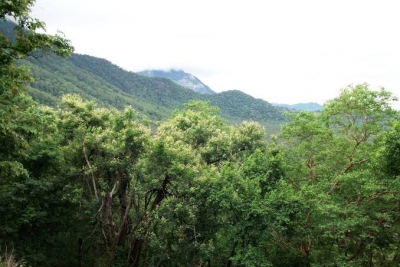
The montane and deciduous rainforests of the southern Western Ghats are in many ways mirror reflections of their northern counterparts because of their similarities. However, they also differ in many aspects such as location, area covered, and endemic flora and fauna.
The southern montane forests of the Western Ghats are spread over the south Indian states of Karnataka, Kerala, and Tamil Nadu, at heights of over 1000 metres. These forests receive heavy rainfall from June till November because of the south-west and northeast monsoon winds. The climate is more stable than in the deciduous forests and it is also the wettest region in the Indian peninsula. These montane forests span an area of 22,600 sq. km, much of which has now been cleared by humans.
Surrounding these mountainous forests on both the western and eastern slopes lie the deciduous forests of the southern Western Ghats. They cover an area of 23,800 sq. km and are thick with tropical moist broadleaf trees. Climate is tropical and humid and varies according to elevation. The higher you climb, the cooler it becomes! Just like the northern deciduous forests, the western slopes receive higher rainfall than the eastern slopes.
Best known spots of the southern Western Ghats are Agastyamalai, Aanamalai, the Palani Hills, the Cardamom Hills and the Nilgiri Hills.
Picture Credit : Google




